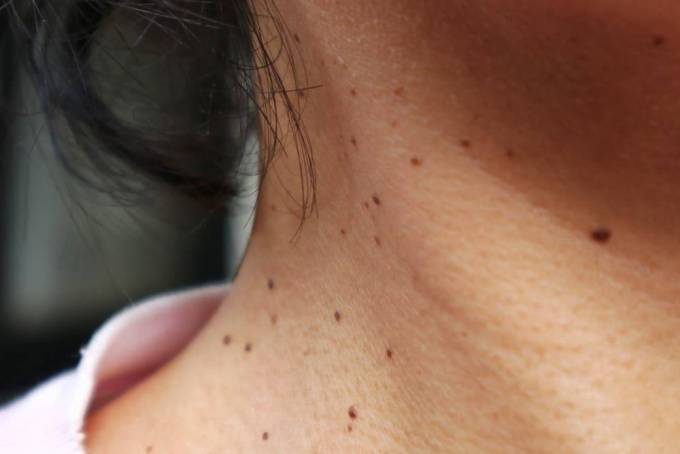Does Skin Tag Removal Require Stitches?
Published By Dynaichealth55 , 27 May 2025

When considering skin tag removal, many patients wonder whether stitches are necessary after the procedure. Skin tags, medically known as acrochordons, are benign skin growths that commonly appear in areas where the skin folds, such as the neck, armpits, eyelids, and groin. Removing these skin tags is a straightforward dermatological procedure, but the necessity of stitches depends on the method of removal and the size and location of the skin tag. This article explores how doctors approach skin tag removal, the factors influencing the use of stitches, and the benefits of professional treatment. If you are considering Skin Tag Removal in Dubai, understanding the process and what to expect can help you make informed decisions.
Understanding Skin Tag Removal Procedures
Doctors use various techniques to remove skin tags, each with different requirements concerning wound closure. The main objective during skin tag removal is to safely excise or destroy the growth while minimizing discomfort and scarring.
Common Skin Tag Removal Methods
-
Excision with a Scalpel or Scissors
This method involves cutting the skin tag off at the base using sterile instruments. It is precise and effective, especially for larger or thicker skin tags. -
Cryotherapy (Freezing)
This method uses liquid nitrogen to freeze the skin tag until it falls off naturally. It’s minimally invasive and typically does not require stitches. -
Electrosurgery (Cauterization)
Electrosurgery destroys the skin tag tissue using electrical current. This method seals blood vessels as it removes the tag, often negating the need for stitches. -
Ligation
This technique involves tying off the skin tag with surgical thread to cut off its blood supply, causing it to dry and fall off. No stitches are needed here.
Each method varies in terms of recovery time, healing, and whether stitches are necessary afterward.
When Are Stitches Required After Skin Tag Removal?
Generally, stitches are not required for the majority of skin tag removals due to the small size and superficial nature of these growths. However, there are specific circumstances where stitches might be necessary:
-
Size and Thickness of the Skin Tag:
Larger or thicker skin tags that require excision with a scalpel may leave a wound that needs closure with stitches to promote healing and reduce scarring. -
Location of the Skin Tag:
Areas with high skin tension or frequent movement (e.g., eyelids or joints) may require stitches to keep the wound edges together and prevent reopening. -
Depth of the Removal:
If the removal involves cutting deeper layers of skin, doctors may place stitches to aid proper healing.
In most cases, doctors use fine dissolvable stitches that do not require removal, enhancing patient convenience.
Doctors’ Approach to Wound Care After Skin Tag Removal
Post-procedure care is essential to ensure proper healing and prevent infection. Here’s how dermatologists handle wound care:
-
Cleaning and Dressing:
After removal, the area is cleaned thoroughly, and a sterile dressing or bandage is applied to protect the site. -
Instructions for Care:
Patients receive clear guidelines on keeping the area dry, changing dressings, and avoiding irritation. -
Monitoring Healing:
Follow-up visits may be scheduled for larger removals or when stitches are used to ensure the wound is healing properly. -
Minimizing Scarring:
Doctors may advise on topical treatments to enhance healing and reduce the risk of noticeable scars.
Proper wound management is a critical part of professional skin tag removal to achieve optimal cosmetic results.
Benefits of Professional Skin Tag Removal
Choosing a skilled doctor for skin tag removal offers several advantages beyond the immediate removal:
1. Safe and Sterile Procedure
Medical-grade instruments and sterile environments drastically reduce the risk of infection compared to at-home removal attempts.
2. Precision and Minimal Scarring
Doctors expertly select removal techniques that minimize tissue damage and prevent scarring, especially important for visible areas like the face and neck.
3. Pain Management
Local anesthesia is used when necessary, ensuring patient comfort throughout the procedure.
4. Customized Treatment Options
Professional assessment allows tailored treatment depending on skin type, tag size, and location, improving overall outcomes.
5. Expert Wound Care Guidance
Doctors provide detailed post-procedure care instructions, reducing healing complications and promoting quick recovery.
6. Evaluation of Skin Health
Doctors can identify suspicious skin lesions during removal, ensuring that any abnormal growths receive proper diagnosis and treatment.
Healing Timeline After Skin Tag Removal
The healing time varies based on the method used and whether stitches were involved:
-
No Stitches:
Small skin tag removal sites typically heal within 7 to 10 days, with minimal discomfort and no scarring. -
With Stitches:
When stitches are placed, healing may take 10 to 14 days. Dissolvable stitches usually disappear within this period without removal.
During healing, mild redness, tenderness, or crusting is normal. Patients should avoid scratching or picking the area.
Risks of Skin Tag Removal Without Proper Medical Care
Attempting to remove skin tags without professional help can lead to complications such as:
-
Excessive bleeding
-
Infection
-
Scarring or skin discoloration
-
Incomplete removal or regrowth
Professional skin tag removal by a doctor eliminates these risks through careful technique and sterile practices.
Conclusion
Does skin tag removal require stitches? In most cases, stitches are not necessary due to the small and superficial nature of skin tags and the minimally invasive techniques used by doctors. However, larger or deeper skin tags, or those located in areas prone to movement, may require stitches to ensure proper healing and minimize scarring. Regardless of the method, professional skin tag removal prioritizes safety, precision, and optimal recovery through expert wound care.
